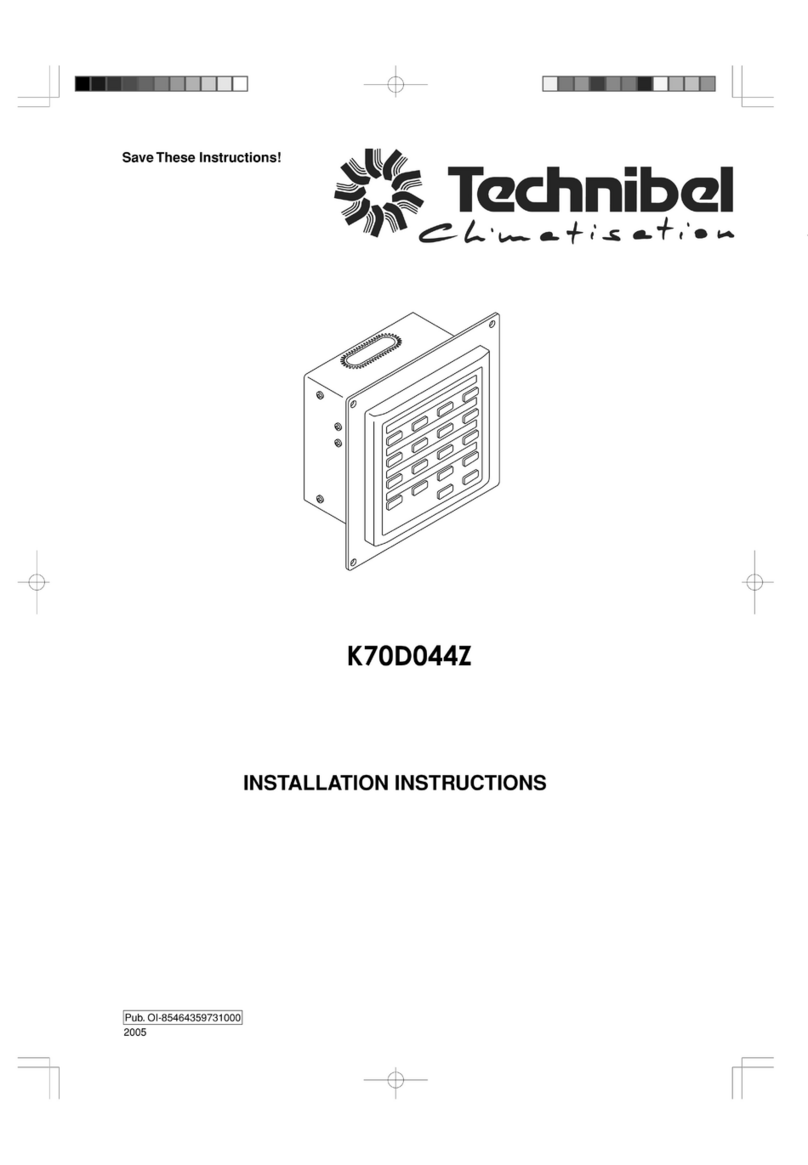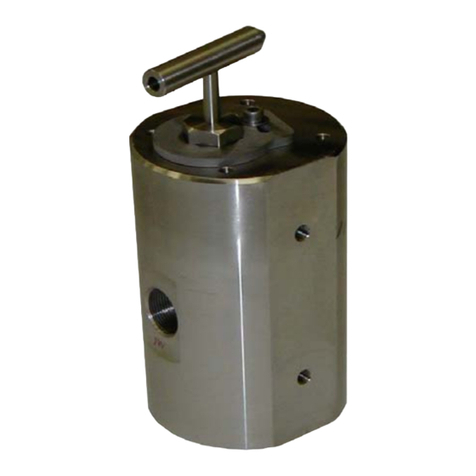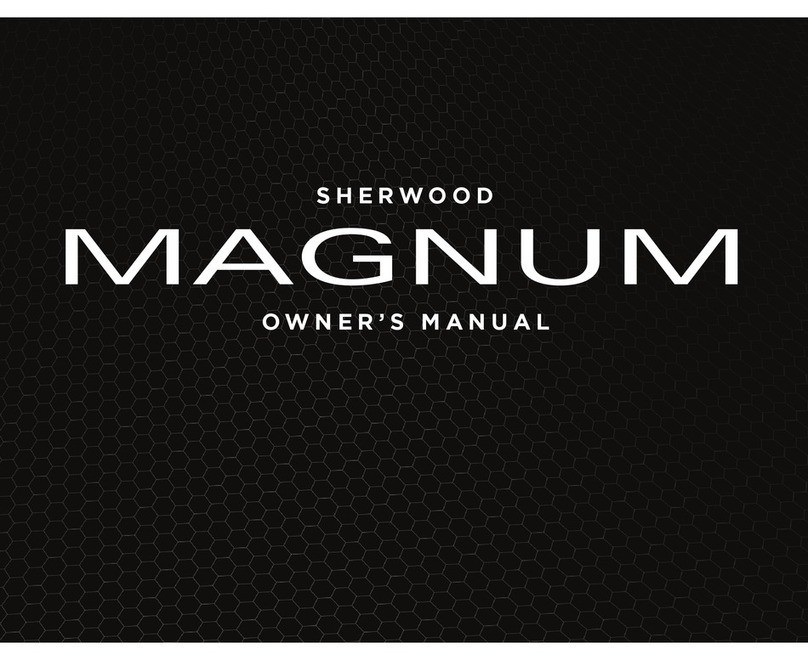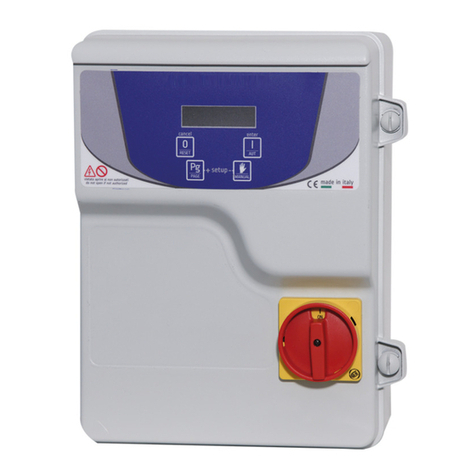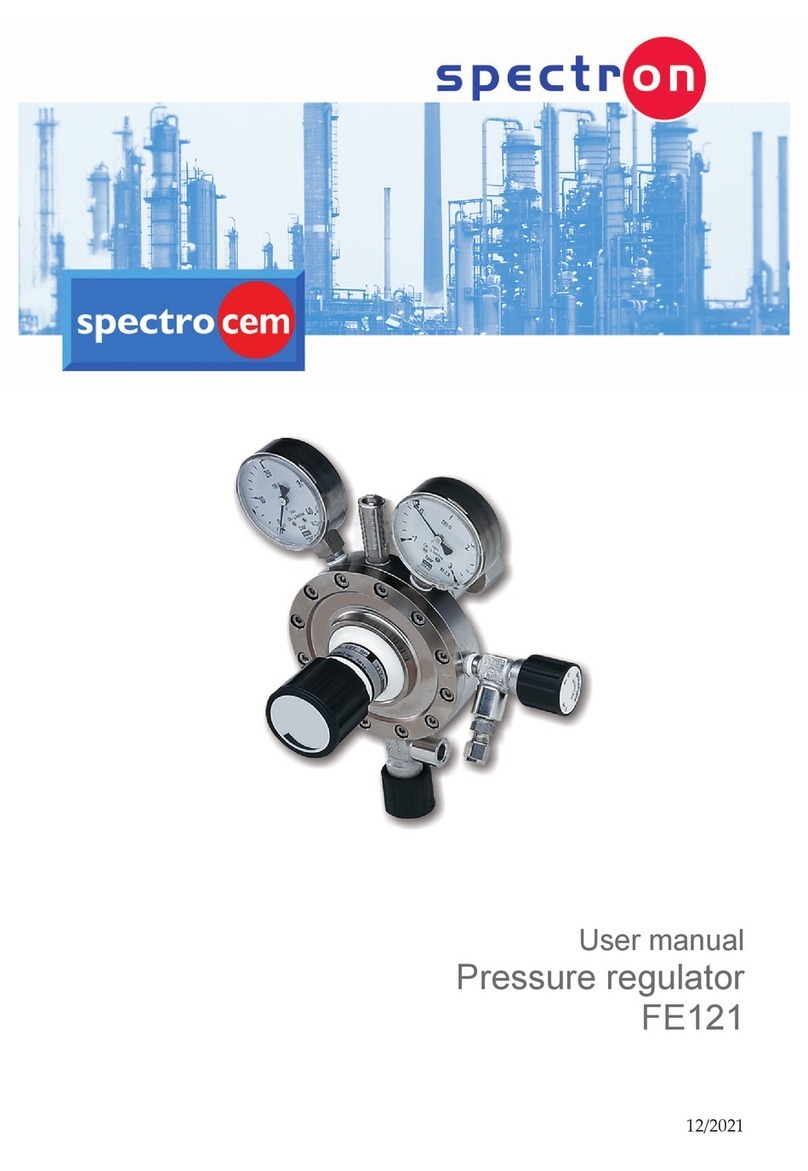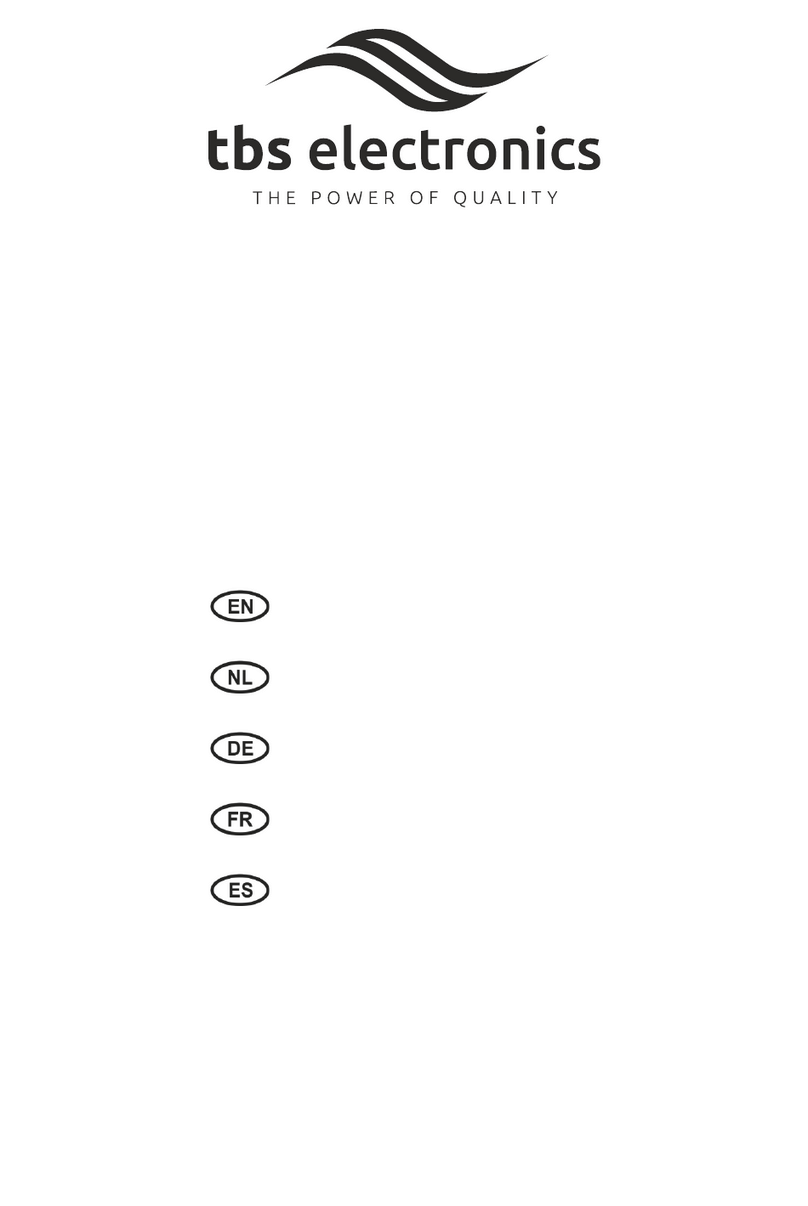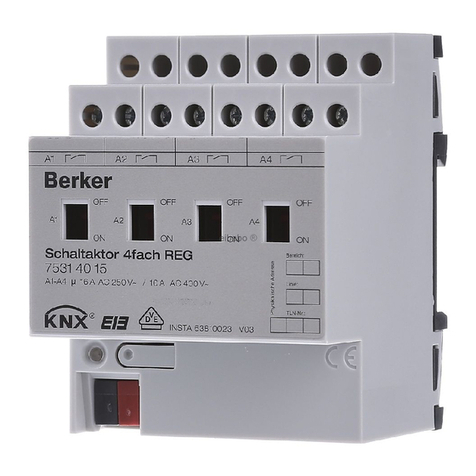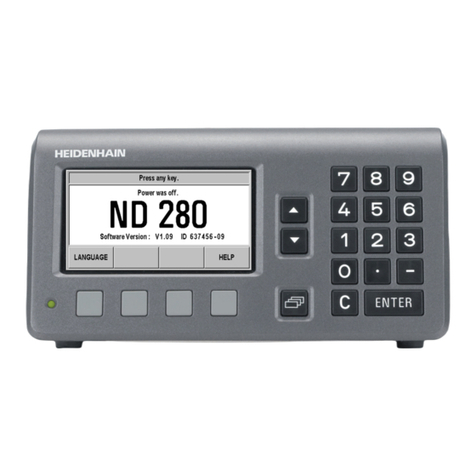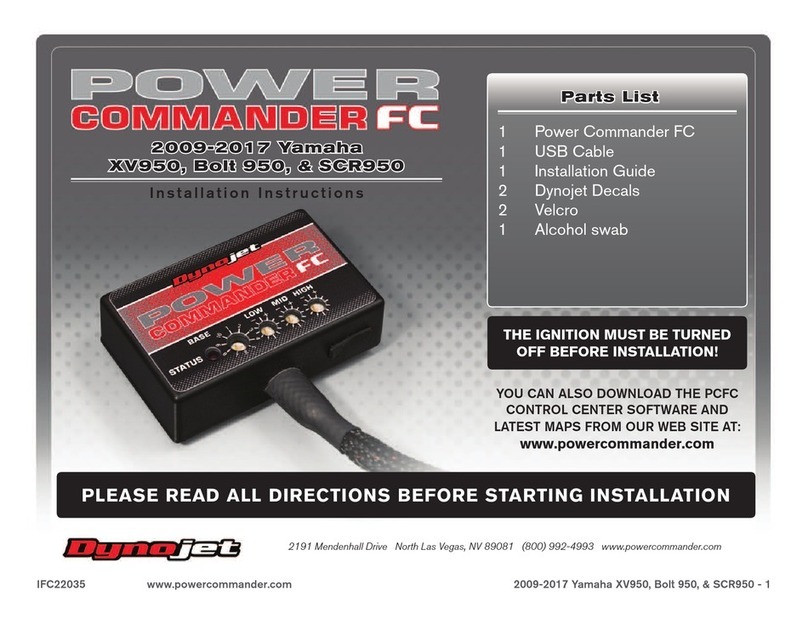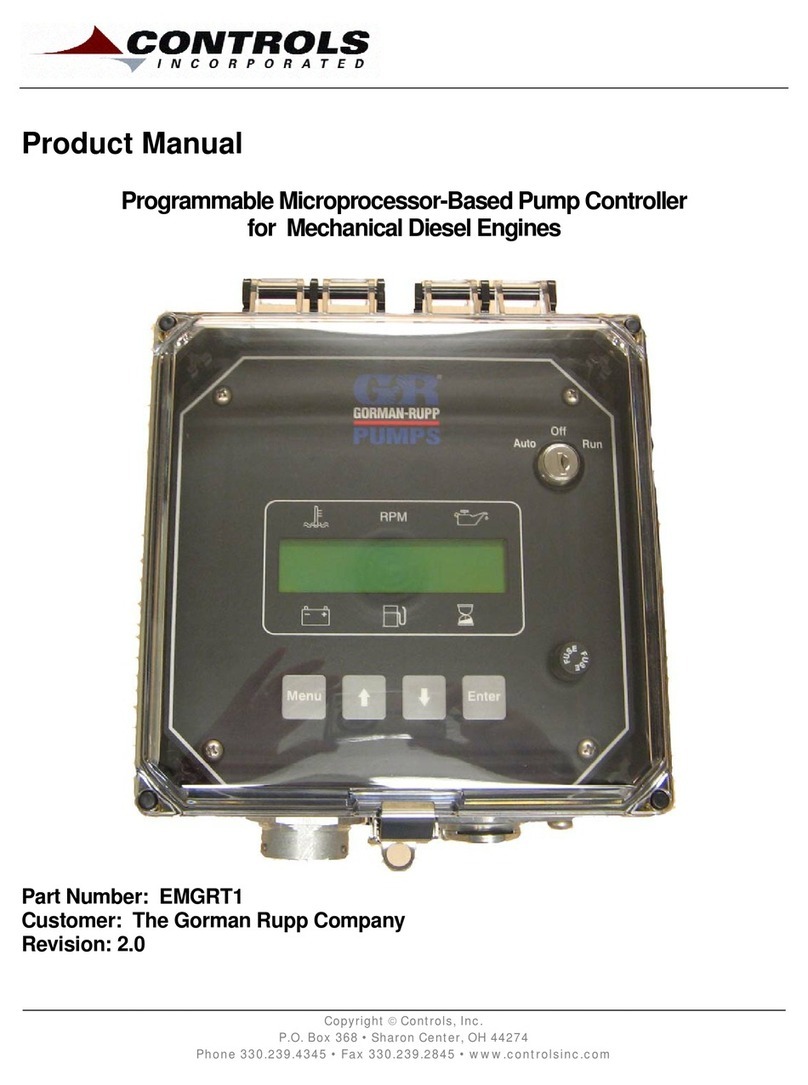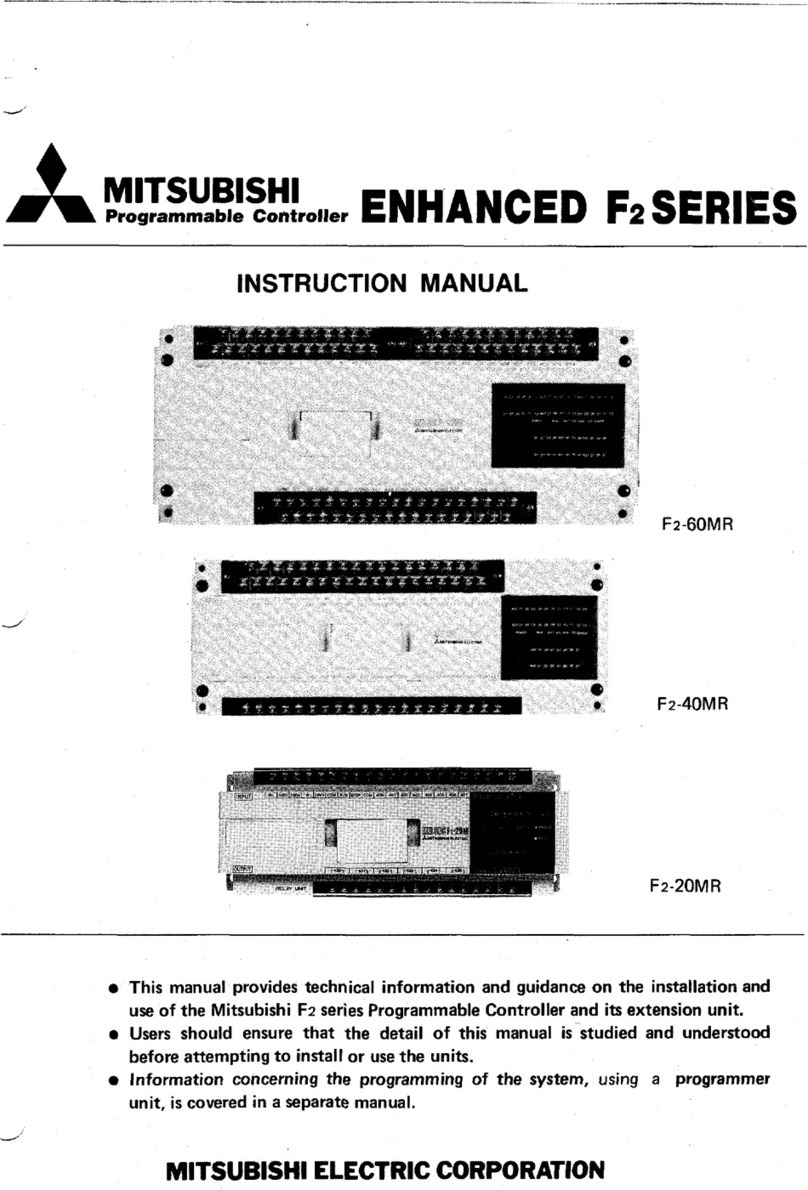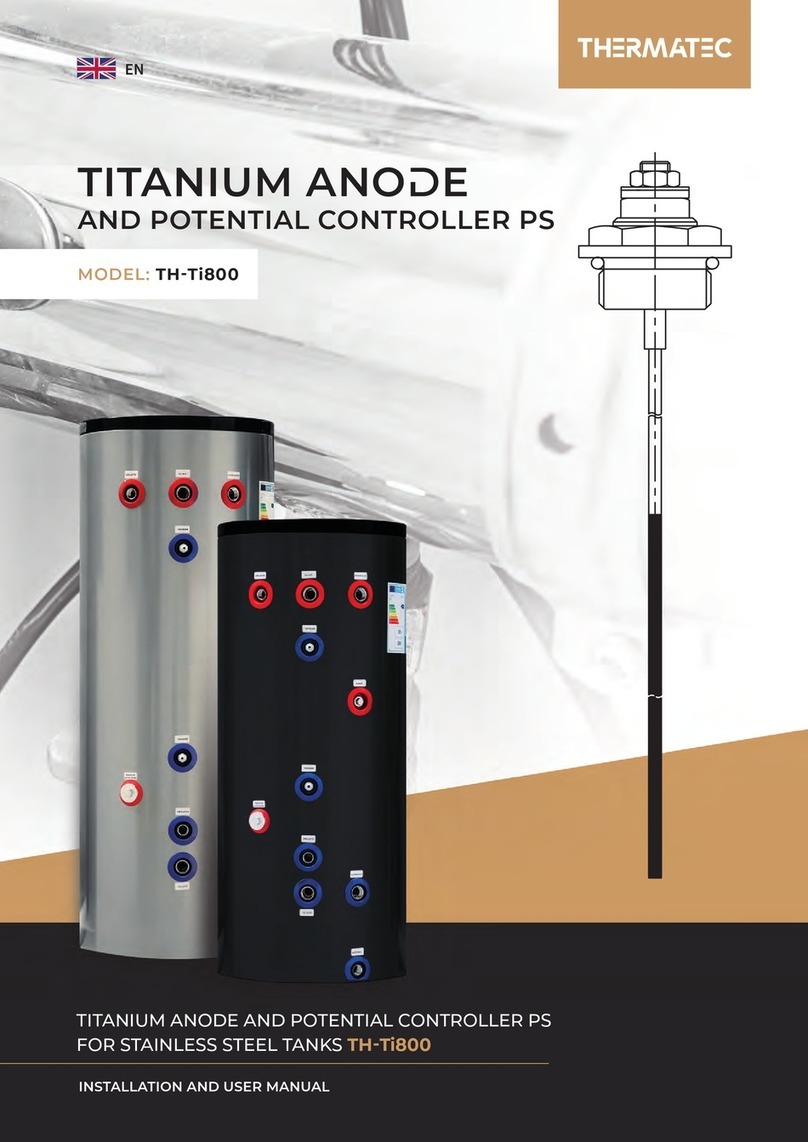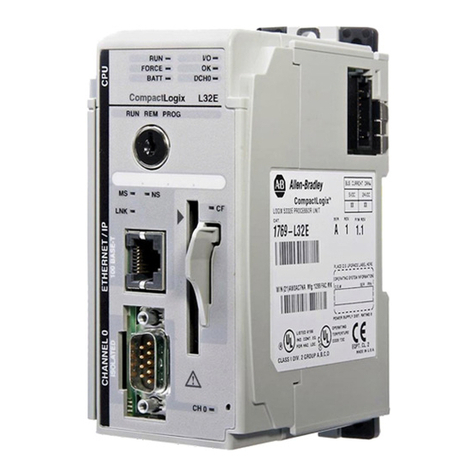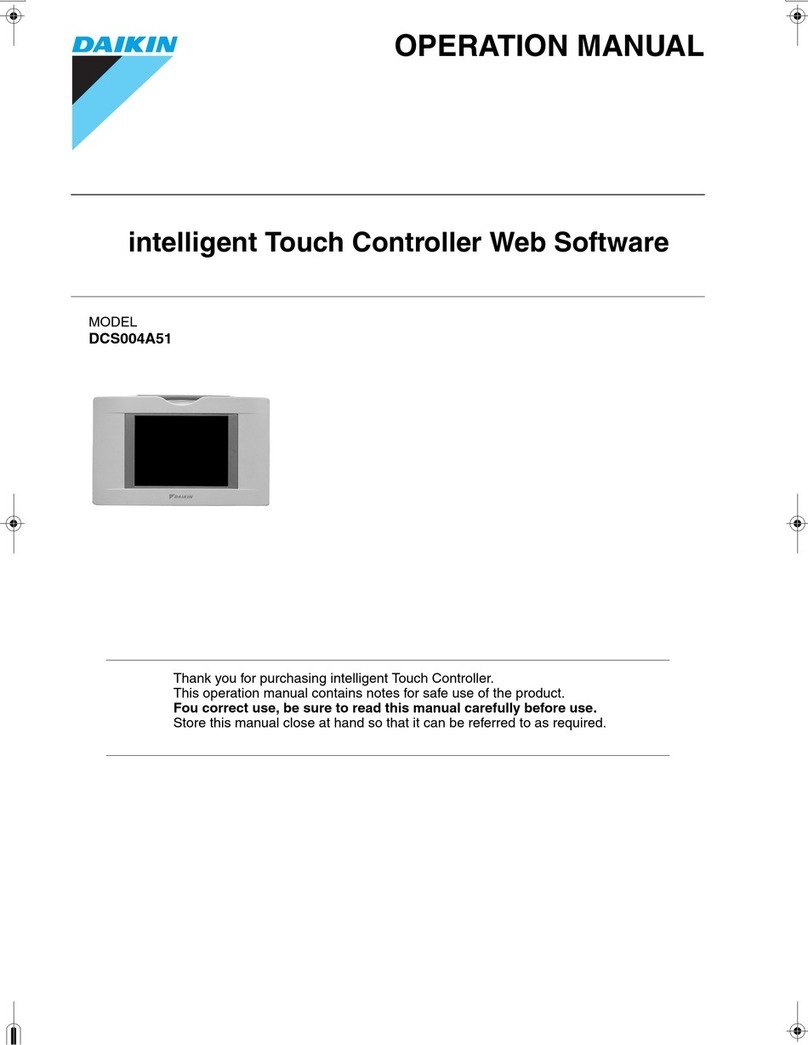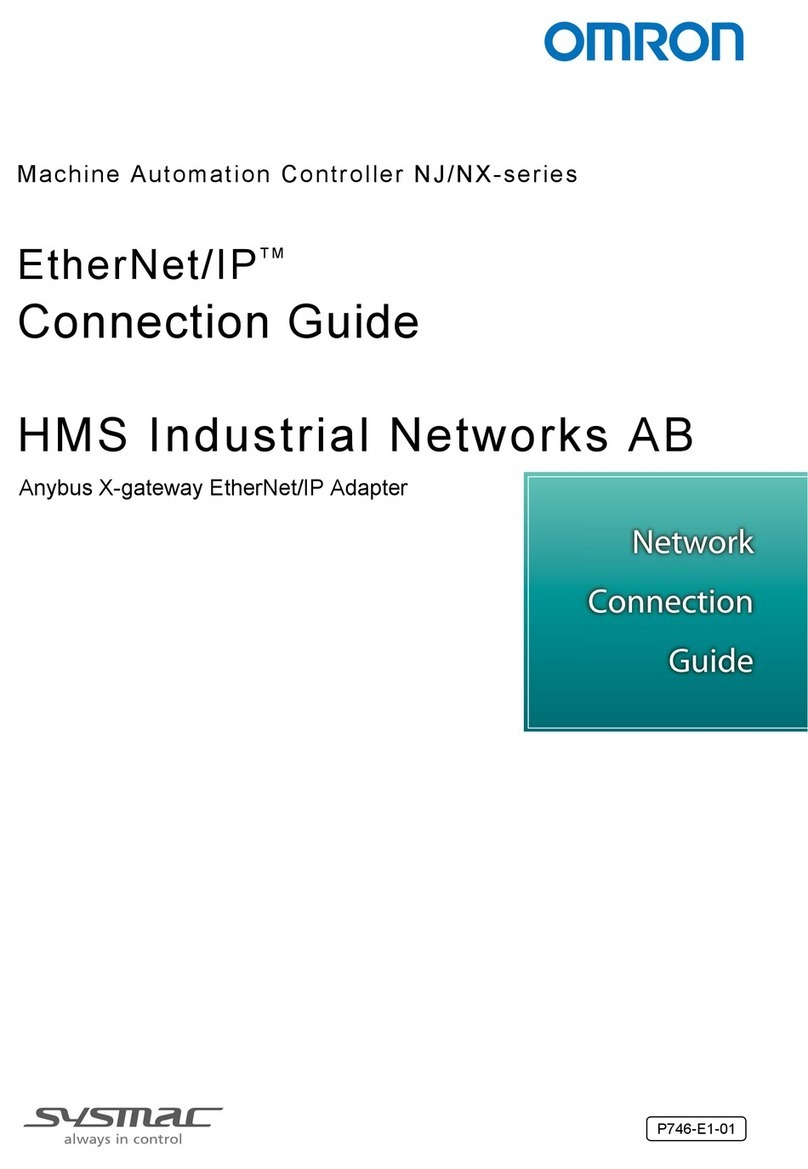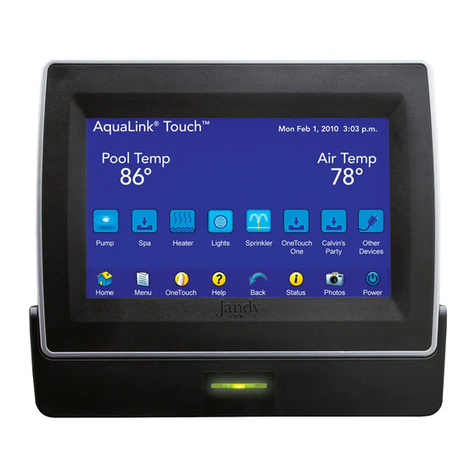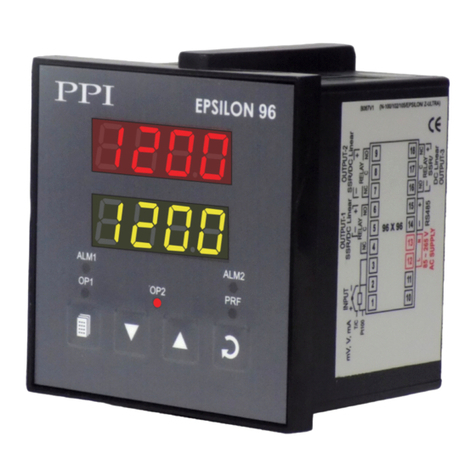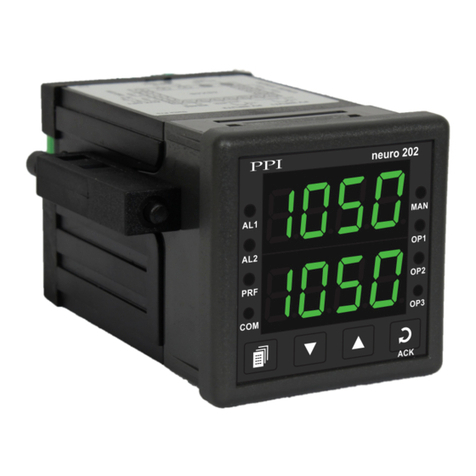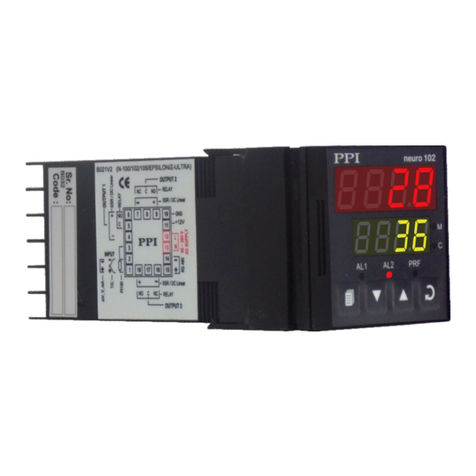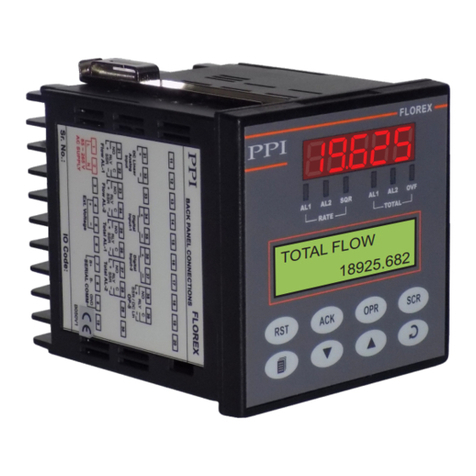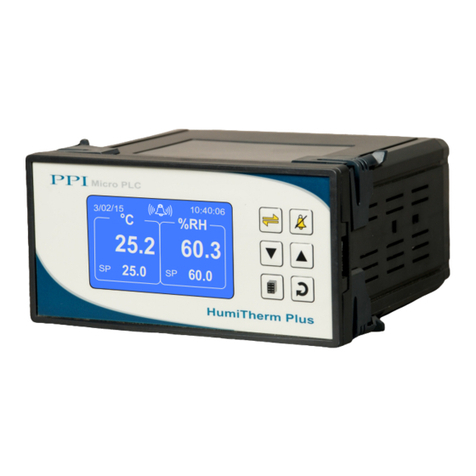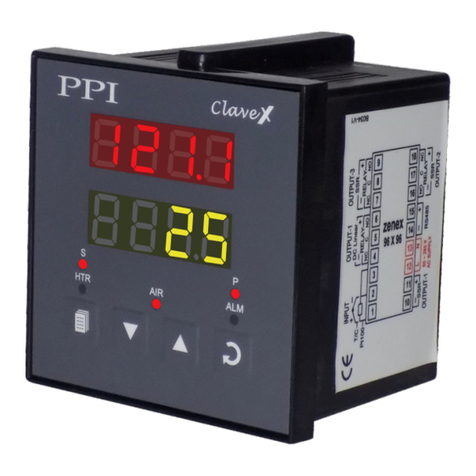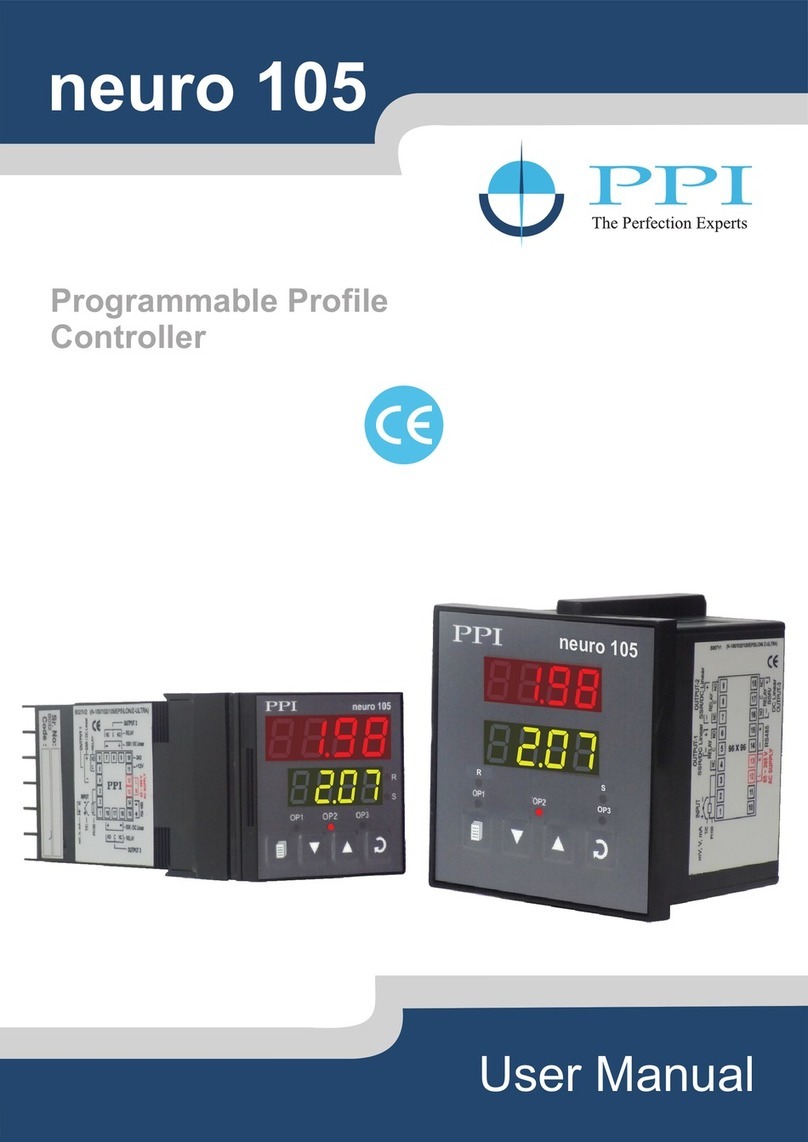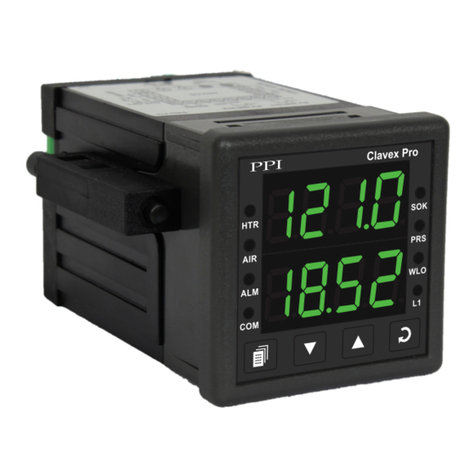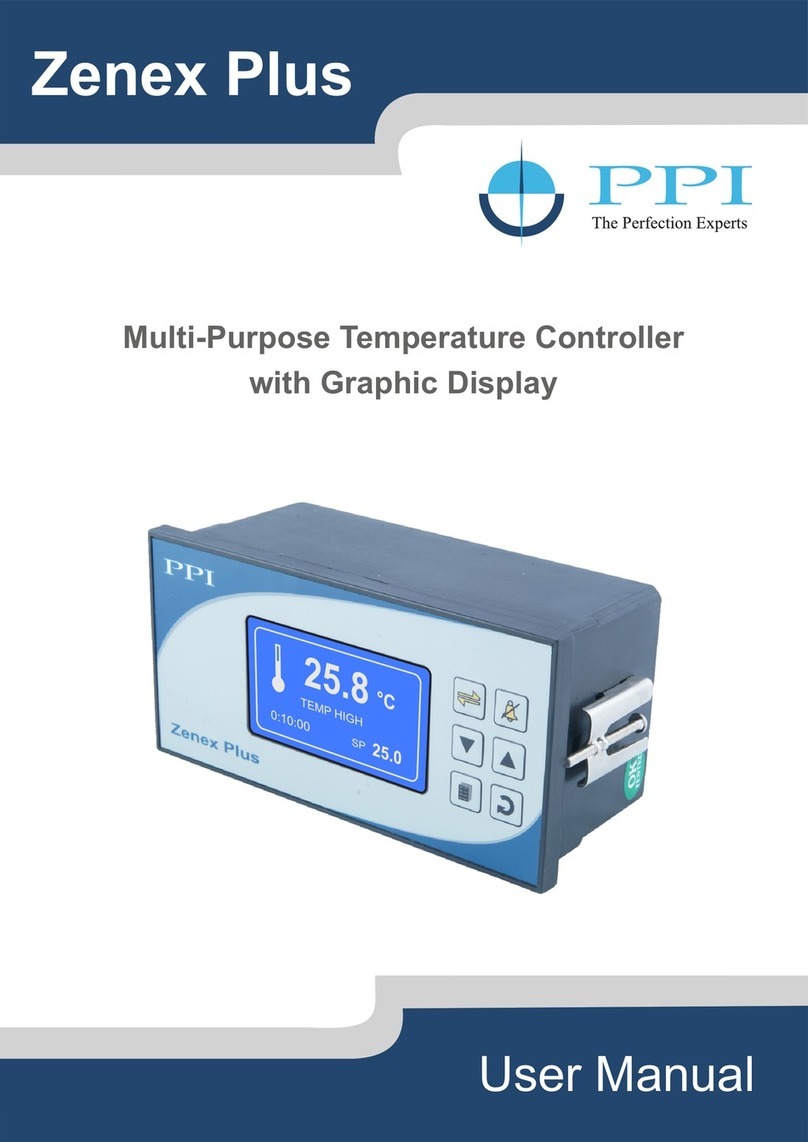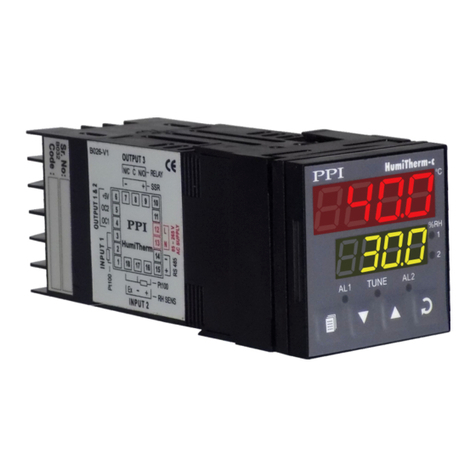4
Table 2.1
PV above Max. Range
PV below Min. Range
Message Error Type Cause
Thermocouple / RTD broken
Sensor Open
Under-range
Over-range
CONTROL / ALARM STATUS UNDER PV ERROR CONDITIONS
a) The tuning, if in progress, is aborted.
b) The Profile Cycle, if in progress, enters in HOLD state.
c) Under Over-range or Under-range error condition, all the control outputs are switched off. However, under Sensor Open
error, the PID control output power depends upon the power - fail strategy and the user set default power value.
d) For Alarm activation, the under-range condition is treated as minimum PV, whereas the over-range and open conditions
are treated as maximum PV. Thus, Process High, positive Deviation Band and Window Band alarms activate under Over-
range/Open error. Similarly, Process Low, negative Deviation Band and Window Band alarms activate under Under-range
error.
• MANUAL MODE OPERATION
This operation mode is available only if the control action is PID and if the manual mode operation is permitted at supervisory
level. In this mode, the controller operates in Open loop mode wherein the % Output Power is manually adjusted by the
operator. This mode is often used for process start-up to make sure that the process equilibrium is achieved before the control
is transferred for subsequent automatic (closed loop) control. The controller ensures a bumpless Auto / Manual transfer.
The Manual mode can be activated or de-activated using A/M key. While in Manual mode, the Upper Readout shows PV while
the Lower Readout shows % Power that can be adjusted using UP/DOWN keys.
Pressing and Releasing A/M key switches the mode from Auto to Manual and vice-a-versa. While the controller is in Manual
mode the front panel indicator MAN glows. Use UP/DOWN keys to adjust the power. In Unidirectional mode, the Output Power
is adjustable between the set Power Low and Power High limits. However, in Bi-directional mode, the Output Power is
adjustable from -100% to +100%.The power range from -100% to 0 is Cool Power (with the leftmost digit indicating C) and 0 to
+100% is Heat Power (with the leftmost digit indicating H).
Notes:
1. If the Manual mode is activated while a Profile Cycle is in progress; the profile segment (Ramp or Soak) continues to run uninterrupted.
However, the % output power is in accordance with the user set value. The PV, thus may not follow the setpoint profile closely.
2. The Manual mode Activation / De-activation is suppressed while the Tuning is in progress. However, the Tuning procedure can be
activated regardless of whether the controller is in Auto or Manual control mode.
3. The Standby Mode (explained later in this section) over-rides the Manual control mode (if active).
4. If the power fails while the Manual Control Mode is active; upon resumption of power the controller continues to remain in Manual control
mode with the last user set power.
• STANDBY MODE
This mode allows the operator to put the controller in ‘indication-only’ mode wherein all the output control signals are forced
OFF while keeping the alarm system enabled. This may be desired prior to the start of a new process batch.
User Manual
neuro 102EX
PV Error Indications
The PV Error type is flashed on the Upper Readout. For different errors and the causes, refer Table 2.1 below.




















